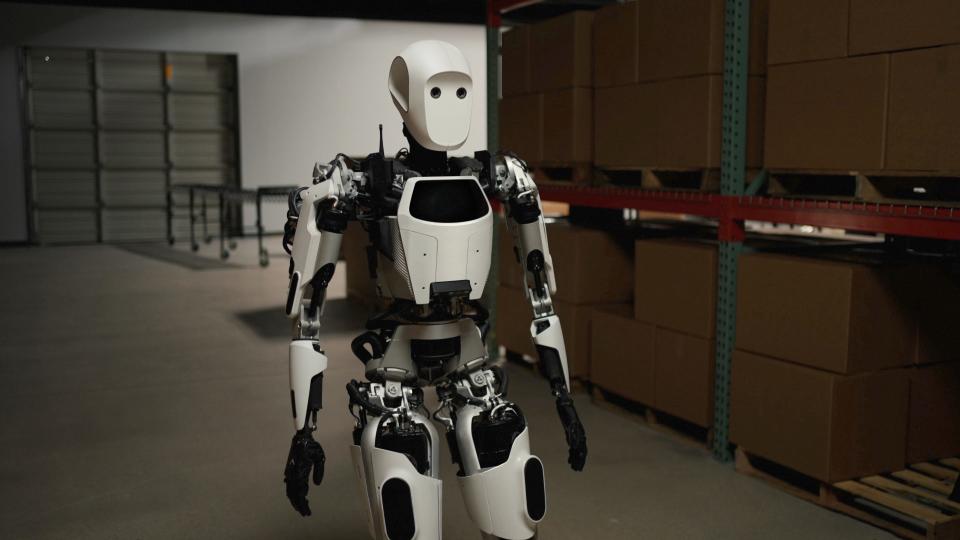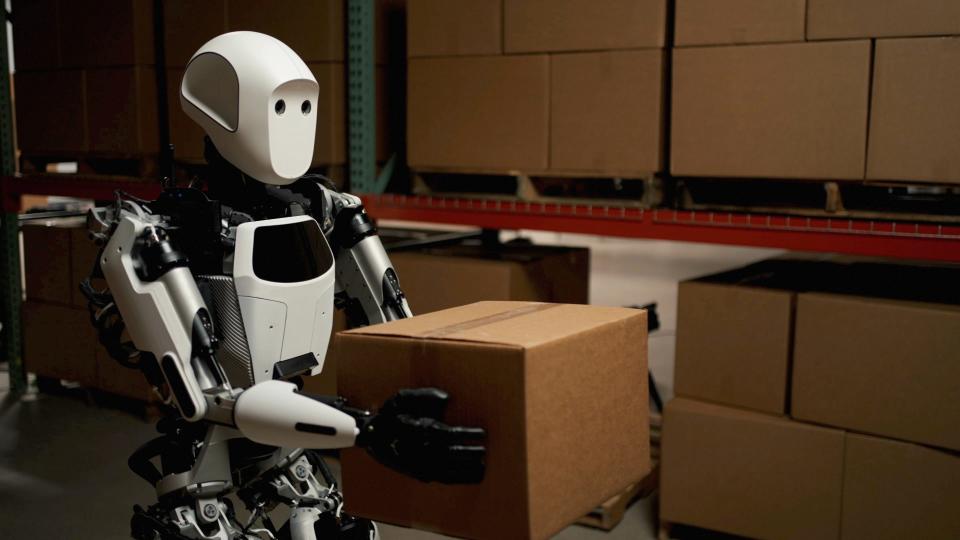At SXSW, Austin-based Apptronik, NASA explore what humanoid robots could do in space
Humanoid robots could be used in space in the not-to-distant future as we explore the moon and Mars, at least according to industry leaders working on the technology.
In a South by Southwest session Sunday, Jeff Cardenas, CEO of Austin-based Apptronik along with Shaun Azimi, lead of NASA’s dexterous robotics program, discussed the possibilities of humanoid robots to work alongside humans in space on moon and Mars missions.
Cardenas said that while there is no national robotics strategy currently, the work companies are doing now with NASA is "society transforming" and working to shape that effort.
"One day, maybe thousands of years from now, there will be millions, maybe billions of humanoids that will be out there exploring the stars. This is how we get there," Cardenas said.

Why are we considering putting robots in space?
NASA is aiming for more moon exploration through its Artemis program, which is intended to return astronauts to the moon, including the first woman and first person of color on the moon. The program is made up of multiple missions, with goals that include establishing a sustainable human presence on the moon by 2028, research on the lunar surface and preparation for private companies to build a moon economy. NASA also ultimately aims to make its "next giant leap" and send humans to Mars.
The new space age is in part fueled by commercial companies, from rocket companies such as Elon Musk's SpaceX and Cedar Park-based Firefly, which builds rockets, satellites and even lunar landers. But NASA will also need companies that can build settlements, and robots that will be able to assist with tasks.
This includes Apptronik, which has partnered with NASA to develop humanoid robots designed to work alongside humans, as well as take on dangerous tasks and expand the potential of missions.
In the session, Azimi said robotics could be a "game changer" for the moon missions but said that NASA can't do the work alone.
"We need the expertise that is spread across the country," he said.
What does Austin-based Apptronik do?
Apptronik has already developed a number of robotics products over the years, including exoskeletons, robotic arms and humanoid robots. Cardenas co-founded the company in 2016 as a spinoff of the Human Centered Robotics Lab at the University of Texas with the aim to produce robots capable of changing the way we work and live.
Last year during SXSW, the company unveiled its latest robot, Apollo, at a private event before announcing it to the world in August. Currently, the company is doing a pilot program with Apollo with a limited number of customers and plans to have a full commercial release next year.

More: Could your next co-worker be a robot? Austin's Apptronik launches humanoid robot 'Apollo'
What challenges could space bring?
During Sunday's session, Azimi and Cardenas said the robots won't be on the moon immediately but would likely start on tasks at the International Space Station and other more controlled environments.
Building in space will also bring its own challenges. The robots will need to be more resilient and will have to be able to operate for stretches without human repair, and with less reliance on technology we take for granted on Earth, Azimi explained.
"We need live systems that are intuitive for humans to be able to interact with, but also will be able to work on their own," Azimi said.
What about here on Earth?
Back on Earth, Cardenas said working alongside robots is increasingly a reality in warehouses and other locations around the country, Apptronik is testing its Apollo robot, which can take on tasks such as lifting and loading boxes, in a number of large companies around the country. He predicted that between Apptronik and other companies' human robots, there will be hundreds this year but could be in the thousands by 2026.
"The appetite as a whole (for humanoid robotic technology) is tremendous," Cardenas said.
This article originally appeared on Austin American-Statesman: SXSW 2024: Apptronik, NASA talk humanoid robots in space
